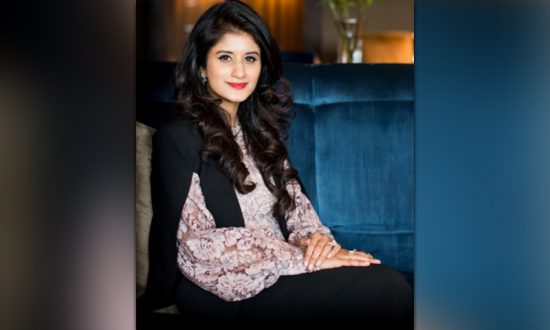Born in India with a rich heritage, Prakshi Sharma grew up with fine jewelry in her blood and a wealth of creativity and art. She launched her own label Prakshi Fine Jewellery in 2012 after having spent two years in New York City. Trained by the visionaries in the industry, Prakshi graduated from the Fashion Institute of Technology. She has also won the prestigious Best Bridal Jewellery Design award with her design produced by the industry leader Carolee and displayed at the renowned high street brand Bloomingdales. Influenced by powerful and talented women who have left their mark, the brand continuously strives to redefine the casual luxury space. Prakshi Fine Jewelry designs are stocked in select boutiques in India and the Gulf, in locations including Dubai, Kuwait, Doha, Jeddah, and Mumbai.
After seeing 2 years of the novel Coronavirus, it’s safe to say that the fine jewelry segment under the jewelry industry seems to be picking up the most as more people realize that investing in something valuable and timeless makes more sense in unprecedented times. The increasing demand for premium and luxurious products is significantly contributing to the demand for gold and diamond jewelry. The pandemic has also paved the way for luxury brands to sell online which has widened their reach, audience, and distribution. Talking about statistics, as per expert market research, the jewelry market is anticipated to grow in the forecast period of 2022-2027 at a CAGR of 5.1% to reach USD 307 billion by 2026.
The trend driving force being the youth, or more specifically GenZ, focuses on mindful consumption and less is better is constantly emphasized upon but the purchasing power still lies with the millennials and hence we see a convergence in the former mindset with the right income group with investment in fine jewelry. There is a boom in content creation as well with regards to re-using the same piece multiple times in different ways, in re-cycling and re-purposing existing jewelry which has helped fine jewelry brands that don’t just cater to weddings and special occasions. There are more people interested in everyday fine jewelry to be worn on a regular basis to work and hold close and pass onto generations.
We also know that the global gender ratio is also skewed towards males which had not been a very active participant or consumer in the jewelry space except non cis-heterosexuals a little which again, is changing with the upcoming generation. As the focus increases on accepting oneself and looking at fashion and accessories as a way of self expression, we should definitely expect an increased audience in the jewelry market which in turn would lead to its growth further. We also recently launched a gender fluid campaign curating classics from our existing collections to emphasize on the message that jewelry is inherently gender free and we don’t need to design it separately and devoid the brand of its original nature or identity.
For the longest time jewelry has also been strictly offline, especially fine jewelry where the novelty lies in the experience, in seeing and trying it on in person, but with covid-19, all brands have adapted to the emerging channel of distribution being e-commerce with investment in a functional website and also a strong presence on social media to build a community and trust amongst them. Which also means that traditional marketing will exhaust eventually if not paired right with digital as per the requirements and hence this will lead to the jewelry market becoming more branded, and in turn, structured. Being branded and structured would also mean that they’d be included right in the GDP which also contributes to the global increase in market size. Being online also means being up to date with all digital and technological trends that would offer a consumer everything possible to replace the traditional jewelry buying experience, from in-house to virtual trials. We’re almost living in a meta-verse and we have to be adaptive enough to respond to the dynamic industry changes and those who do will gain a larger chunk in the share.
There is also a possibility of a boost in the Asia-Pacific jewelry market which was earlier manufacturing centric as compared to the commercial American and European Markets. The Asian players are realizing their strength in manufacturing and the audience with improved disposable income to leverage it into building global brands.


